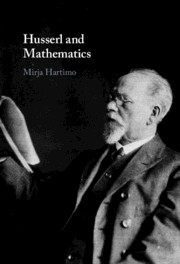Book contents
- Husserl and Mathematics
- Husserl and Mathematics
- Copyright page
- Dedication
- Contents
- Acknowledgments
- Abbreviations
- Introduction
- Chapter 1 From the Division of Labor to Besinnung
- Chapter 2 The Chimera of Logicism: Husserl’s Criticism of Frege
- Chapter 3 Clarifying the Goal of Modern Mathematics: Definiteness
- Chapter 4 Normativity of the Euclidean Ideal
- Chapter 5 Husserl’s Formal and Transcendental Logic (1929)
- Chapter 6 Gödel, Skolem, and the Crisis of the 1930s
- Chapter 7 Husserl’s Combination View of Mathematics
- Chapter 8 Kant and Husserl’s Critical View of Logic
- Epilogue A Look Ahead
- Bibliography
- Index
Chapter 7 - Husserl’s Combination View of Mathematics
Published online by Cambridge University Press: 29 July 2021
- Husserl and Mathematics
- Husserl and Mathematics
- Copyright page
- Dedication
- Contents
- Acknowledgments
- Abbreviations
- Introduction
- Chapter 1 From the Division of Labor to Besinnung
- Chapter 2 The Chimera of Logicism: Husserl’s Criticism of Frege
- Chapter 3 Clarifying the Goal of Modern Mathematics: Definiteness
- Chapter 4 Normativity of the Euclidean Ideal
- Chapter 5 Husserl’s Formal and Transcendental Logic (1929)
- Chapter 6 Gödel, Skolem, and the Crisis of the 1930s
- Chapter 7 Husserl’s Combination View of Mathematics
- Chapter 8 Kant and Husserl’s Critical View of Logic
- Epilogue A Look Ahead
- Bibliography
- Index
Summary
So far, I have attempted to show that Husserl’s philosophy of mathematics is primarily a method for assessing the current state of the art of mathematics. He explains his method most maturely in the introduction to Formal and Transcendental Logic (1929), where he claims that the work is a result of radical Besinnung, discussed in detail in Chapter 1. Assuming that rational activities are goal-directed, Besinnung aims to clarify the sense of an activity by explicating the (typically implicit) goals that guide that activity.
Information
- Type
- Chapter
- Information
- Husserl and Mathematics , pp. 158 - 174Publisher: Cambridge University PressPrint publication year: 2021
